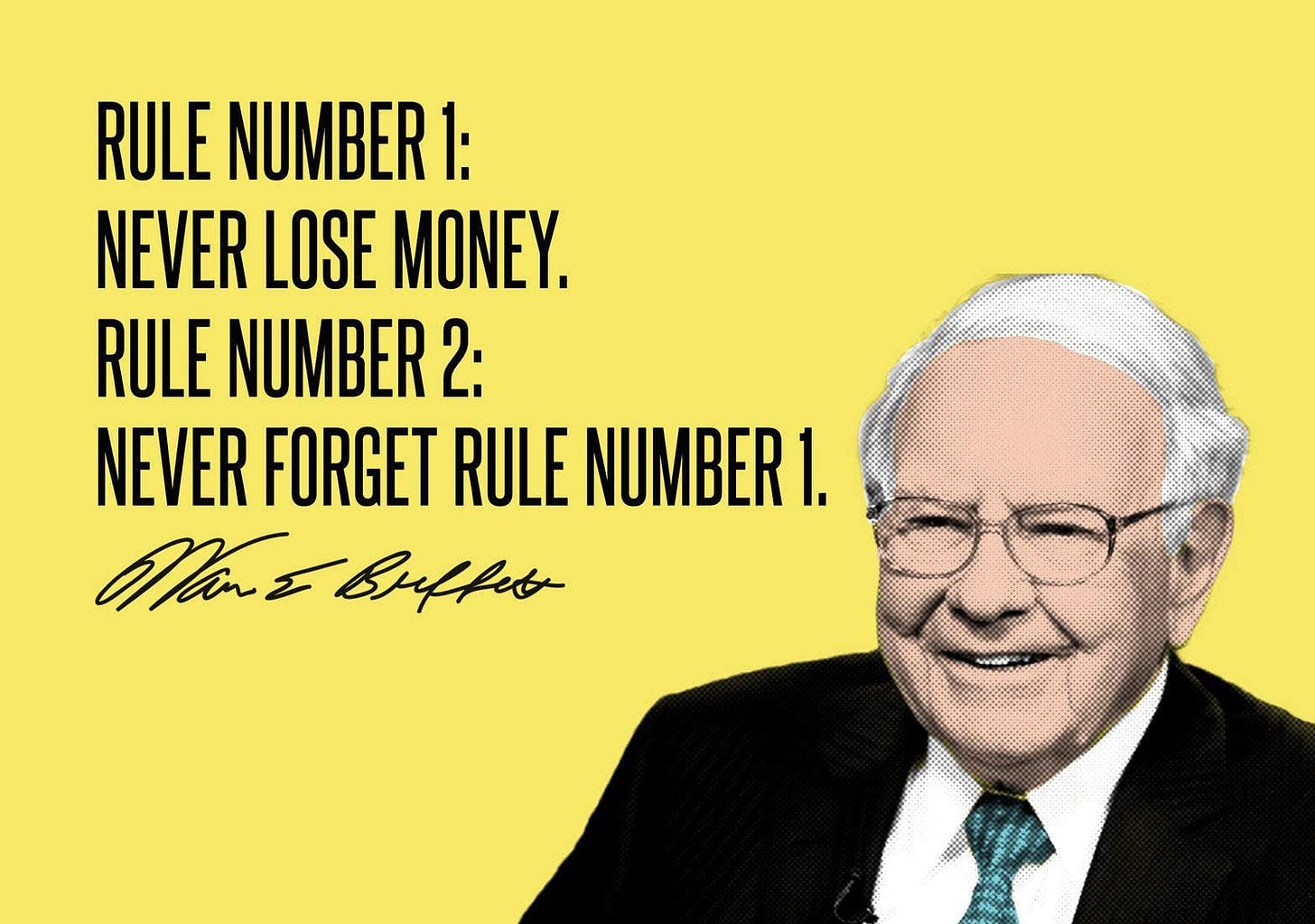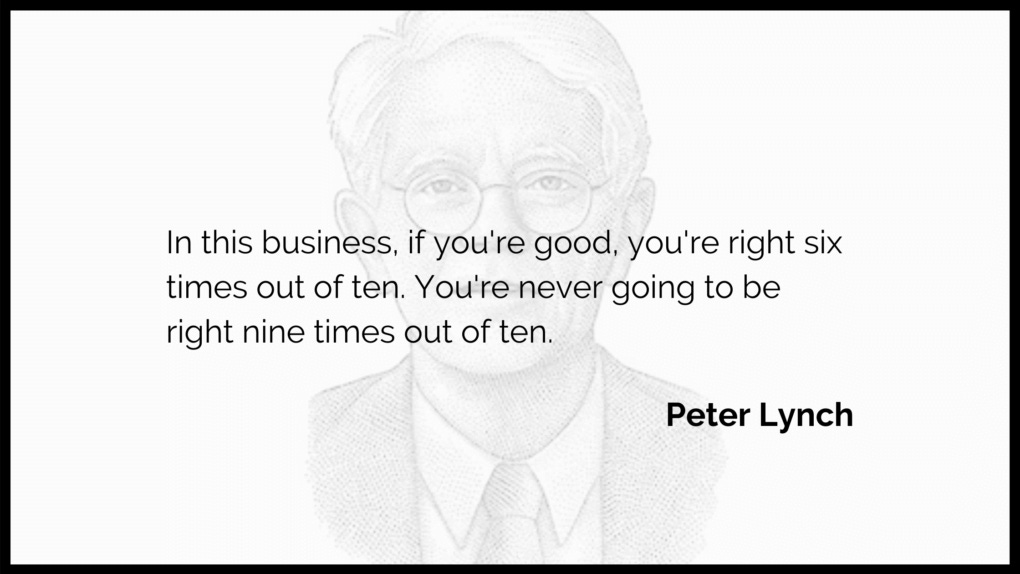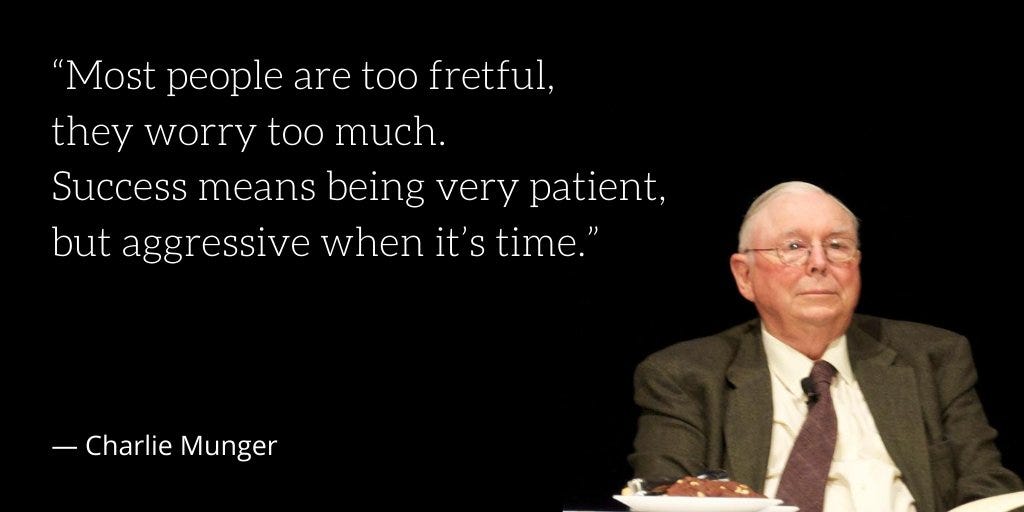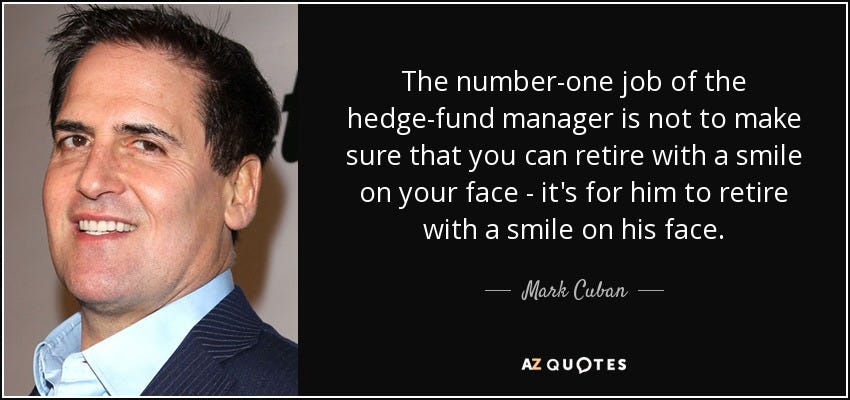The Hermit Way
The philosophy behind investing in small, high quality, underfollowed and well managed companies around the world
My dear (new) fellow Hermits 👋
We wrote this post to help newcomers quickly grasp who we Hermits are.
Our posts and podcasts may diverge from “common knowledge” or the “industry standard,” but these principles underlie everything we do.
Thank you so much for your continued support!
The Company
🤏 Keep It Small
Unlike typical investors, we maintain our retail edge by purchasing only what institutional players overlook.
Keeping our investments small offers a dual advantage:
It eliminates competition from institutional players who cannot deploy capital efficiently, and
It allows us direct access to management.
Here’s Peter Lynch talking about how we can use size to our advantage
🤫 Prioritize the Underfollowed
In addition to keeping our investments small, we should prioritize lesser-known references. While investing in meme stocks may seem appealing, if a stock is widely known, our edge will likely already be factored into the price.
Focusing on the unknown or unloved lets us participate directly in price discovery. The absence of institutional coverage is a strong indicator of potential mispricing.
🎯 Stay Within Your Circle of Competence
A business must fall within our area of expertise to ensure more informed and confident decision-making, thereby minimizing the risks associated with unknown unknowns (factors that we are completely unaware of and, therefore, cannot anticipate or plan for).
Recognizing and respecting the boundaries of our circle of competence is crucial for long-term investment success. It's important to note that our ability to understand different companies and sectors will expand over time.
Here’s Mohnish Pabrai explaining how we can develop our circle of competence
👨🏽💼 Focus on Great Management
We are looking for fanatics (true fanatics). Managers with skills, integrity, and passion who are committed to fighting for us every single day. These dedicated managers will foster a culture that ultimately builds a strong moat around the business.
Management incentives are incredibly powerful tools. We must pay close attention to how they are structured, as they can accelerate progress just as easily as they can turn the enterprise into a ticking time bomb.
Here’s Cliff Sosin describing how a company sets culture and information-gathering
🏰 Building a Moat
Our targets are generally too small to sustain a moat or competitive advantage. However, the company must have the potential to develop a moat, and managers must work tirelessly to expand it.
This second part is crucial because complacency can lead to stagnation. Without continuously expanding the moat, competitors will inevitably catch up. A great indicator of this is the frequent small bets placed on innovative ideas.
Here’s Rob Vinall discussing several types of moats. Here’s our post on the topic.
🚀 Growth is Crucial
We want top-line growth (revenue) and margin expansion (EBIT). These are the two best proxies for long-term increased company valuation, accounting for 80%+ of the change in stock prices.
💵 Cheap-ish Valuations
We typically seek a low price-to-FCF multiple, which is typically measured using the Last Twelve Months (LTM) or the Next Twelve Months (NTM) period.
We want a 15% FCF yield or a <6x FCF multiple.
However, it's important to look beyond these metrics and consider free cash flow generation over at least the next five years.
Companies with low valuations are often priced that way for a reason and should be approached cautiously, as they may be value traps.
Additionally, it's crucial to adapt to various methods of gauging profitability to uncover hidden gems. Investing in opportunities with high potential can be worthwhile, even if it involves the risk of short-term losses.
For more information, check out Aswath Damodaran’s videos on valuation
🌟 Pay Attention to Returns
A high base Return on Capital Employed (ROCE) generally filters for low CAPEX industries but is also applicable to most companies. ROCE is also a fairly decent indicator of management’s competence.
Measuring ROCE on a project rather than a company level is important. A good rule of thumb is to have an ROCE of 20%.
🦾 Search for Return Enhancers
We seek companies with clear and easily executable reinvestment opportunities. If management can replicate the profitable model, we will benefit from compounding at highly efficient rates.
Additionally, companies can enhance shareholder value by modifying the capital structure or allocation. Common examples include share buyback programs, strategic acquisitions, and dividend distributions.
However, it's important to approach these strategies with caution. Hoarding cash for "safety," going into debt to pay dividends, buying back shares at a price above their intrinsic value, and making poor acquisitions can all be detrimental.
Acquisitions, in particular, are a bad idea unless made by specialists or serial acquirers such as Berkshire Hathaway, Constellation Software, or Brad Jacobs.
🧾 Look for Sensible Capital Structures
When evaluating businesses, we must consider their capital expenditure (CAPEX) dependency. Low CAPEX businesses are generally preferable. However, this is not an absolute rule, as each company's circumstances vary.
Another critical factor is the type of debt a company holds, which can be more important than the quantity of debt.
For example, a company with no traditional debt but preferred shares with unfavorable terms can be problematic. Similarly, a business might have substantial debt through sale and leaseback agreements, which can function as forced rent and be attractive.
Understanding these nuances may seem trivial, but it can make or break an investment case.
☠️ Avoid Dilution
Dilution can severely impact an investment by reducing the value of existing shares, making it a critical factor to consider. When a company issues additional shares, the ownership percentage of current shareholders decreases, resulting in a smaller share of the company's profits and assets.
Frequent or large-scale dilution can signal that the company struggles to manage its finances, potentially undermining investor confidence and depressing the stock price.
Dilution erodes returns for existing investors, just as inflation reduces a currency's value. It is crucial to keep dilution as close to zero as possible to protect our interests.
Here’s Ryan Pape, CEO of XPEL, explaining how he developed his company while barely diluting shareholders
🚰 Pay attention to Volume
Volume refers to the number of shares exchanged at a given time. Microcaps are inherently illiquid investments. They are assets that cannot be quickly or easily converted into cash without a substantial loss in value, which is commonly considered a risk.
For us, the illiquidity in microcaps means longer holding periods and lower portfolio turnover at the expense of low maneuverability
🎁 Bonus Points
All the above characteristics get bonus points if they have one or more of the following characteristics:
🙂 Simplicity. Easy to understand qualitatively and quantitatively
🔍 Clarity. Routinely providing reasoning and details of operations
♿ Accessibility. Easy access to management and board members
The Portfolio
🙇🏻 Be Patient and 💤 Embrace Inactivity
Being patient in investing is beneficial because it enables us to endure market volatility, harness the power of compound interest, make rational decisions, focus on long-term fundamentals, and minimize transaction costs.
In essence, patience is crucial for achieving long-term investment growth.
Here’s an extract from the Intelligent Investor explaining the untimely principles of Chapter 8 and why you should not pay constant attention to Mr. Market
♾️ Consider Only Extended Time Horizons
To benefit from compounding, we need consistent, high returns and sufficient time for those returns to accumulate and grow exponentially.
Here’s a chart to illustrate the magic of compounding:
Compounding requires time because it involves reinvesting earnings to generate additional returns, leading to exponential growth. Although growth may seem slow initially, the reinvested earnings significantly boost the investment's value over time.
The longer the investment period, the more pronounced the effects of compounding, making time a crucial factor for maximizing returns.
📝 Concentrate
Concentration allows us to focus on a smaller number of high-quality stocks. By concentrating our bets, we can better understand and monitor each company, capitalize on our in-depth knowledge and insights, and capitalize on significant growth opportunities in excellent enterprises.
We’re still searching for the perfect number, but it likely hovers around 20 companies.
Concentration is a double-edged sword. We must understand that poor performance in a concentrated portfolio can have a larger impact on our future. This is explained by ergodicity.
Ergodicity is a concept that describes a system's long-term averages matching the averages observed at different points in time.
Essentially, over a long period, the system's behavior will reflect the same patterns seen in shorter, individual periods. Therefore, if we consistently lose, our long-term performance will suffer the same fate.
Thus, successful concentration requires thorough research to build conviction in the selected investments. We don’t have to be right every time, but we must consider the opportunity cost of being wrong.
🔢 Check Diversification
Diversification in a portfolio mitigates risk by spreading investments across various assets, reducing the impact of any company's poor performance.
Owning 15-25 companies minimizes risk and achieves high potential returns.
Before investing, we ensure that each company aligns well with our portfolio. A key factor is checking if the company is uncorrelated with the rest of the portfolio.
Uncorrelated assets improve diversification because they do not move in sync.
Including uncorrelated assets ensures the portfolio is not overly dependent on any single asset, leading to more stable and consistent returns.
📈 Watch the Trend
Macro actors are significant because they influence the broader economic environment, which in turn impacts all investments. Factors such as interest rates, inflation, unemployment rates, and geopolitical events can significantly affect market performance and investor sentiment.
You don’t want to be a macro top-down investor, but beware of putting all your chips in when markets are high. While it's crucial not to base all investment decisions solely on macroeconomic trends, it's equally important to avoid investing heavily during market peaks, as this can expose the portfolio to substantial losses if a market downturn occurs.
Balancing awareness of macro factors with individual investment analysis can enhance portfolio resilience and long-term returns.
Practical Rules of Thumb
Rule #1
Rule number 1 in investing is to never lose money.
This principle, popularized by Warren Buffett, emphasizes protecting your capital above all. Avoiding losses is crucial because recovering from them is harder than making gains.
This rule promotes thorough research, informed investment decisions, and the avoidance of unnecessary risks.
Check out what the master himself says about this
You get it right 50% of the time
Achieving a higher accuracy rate, such as being right 90% of the time, is unrealistic. Managing risk and understanding that inevitable mistakes and losses are part of the investing process.
If I had to take away one thing from my previous experiences, it would be that moderate success is the goal in investing, and near-perfect accuracy is a myth that can drive you mad. Acknowledging that we will not be right about 50% of the time is part of the journey.
Balancing patience and aggression.
One of the most challenging aspects to master is striking a balance between patience and decisiveness. Excessive worrying can hinder good decision-making, but so can inaction in pivotal moments.
Be careful with FOMO
FOMO, or Fear of Missing Out, in markets refers to the anxiety investors feel when they see others making profits and worry that they're missing out.
This can lead to impulsive decisions, like buying into a rising stock without proper research, often during market bubbles. To avoid FOMO, we should stick to their long-term plans and not be swayed by short-term market hype.
P.S. If you haven’t checked out The Kominsky Method, you are indeed missing out on one of the funniest comedic drama series you’ll ever watch (you’ll thank me later)
Beware the Scams
In finance if you look under a rock and you’ll find a scam. IMO, the biggest scam of all is fees. Fees from money managers can significantly erode your returns.
Many money managers charge high management fees and performance-based fees, which can consume a substantial portion of the gains.
If your advisor suggests buying Microsoft at $X.XX or buying GM at $Y.YY, you should be scared.
You should only pay for specialists (e.g., those focused on China, biotech, microcap, etc.) and try to pay them based exclusively on performance.
The Buffet partnership (1956-68) charged the following (initially):
0% management fees
4% pref rate. Clients pay nothing for the first 4% of their returns. Buffett guaranteed this return, so achieving anything lower than this would force him to pay out-of-pocket
50% profit sharing. Once the fund crosses the 4% hurdle rate, Buffett charges 50% of the rest of what the fund returns
High watermark. The manager only earns performance fees if the fund's value exceeds its highest previous peak, ensuring investors are not charged for gains that merely recover prior losses
As the years passed, he increased the hurdle to 6% and reduced the performance fee to 25% of the profits.
We should also consider opportunity cost in terms of lower-cost alternatives, such as index funds or ETFs, which often provide comparable or better returns with significantly lower fees.
Instead of a mandate, this set of rules aims to emulate documents like the United States Constitution, as drafted by the Founding Fathers.
It does so by being open to interpretation and change.
On the one hand, input and output can vary significantly depending on the context.
Adopting a set of guidelines rather than rigid rules allows for adaptability in new environments and situations.
Whether you've encountered a similar scenario before, it's crucial to treat each company as a unique entity with some visible commonalities and many more opaque particularities.
On the other hand, it's crucial to remain flexible and open to new approaches.
Each asset, company, and situation can vary tremendously, from industry-specific metrics like the combined ratio for insurance to valuation standards such as ARR multiples for software companies with high fixed costs (operational leverage).
New methodologies and industries can emerge, and you should always be open to new ideas.
Great advice can come from the most unexpected sources, ranging from seasoned professional managers to your 10-year-old nephew who’s addicted to that game nobody knows about.
You might have heard of it… I seem to recall it being called Robox or Roblux. Oh yeah, Roblox.

















